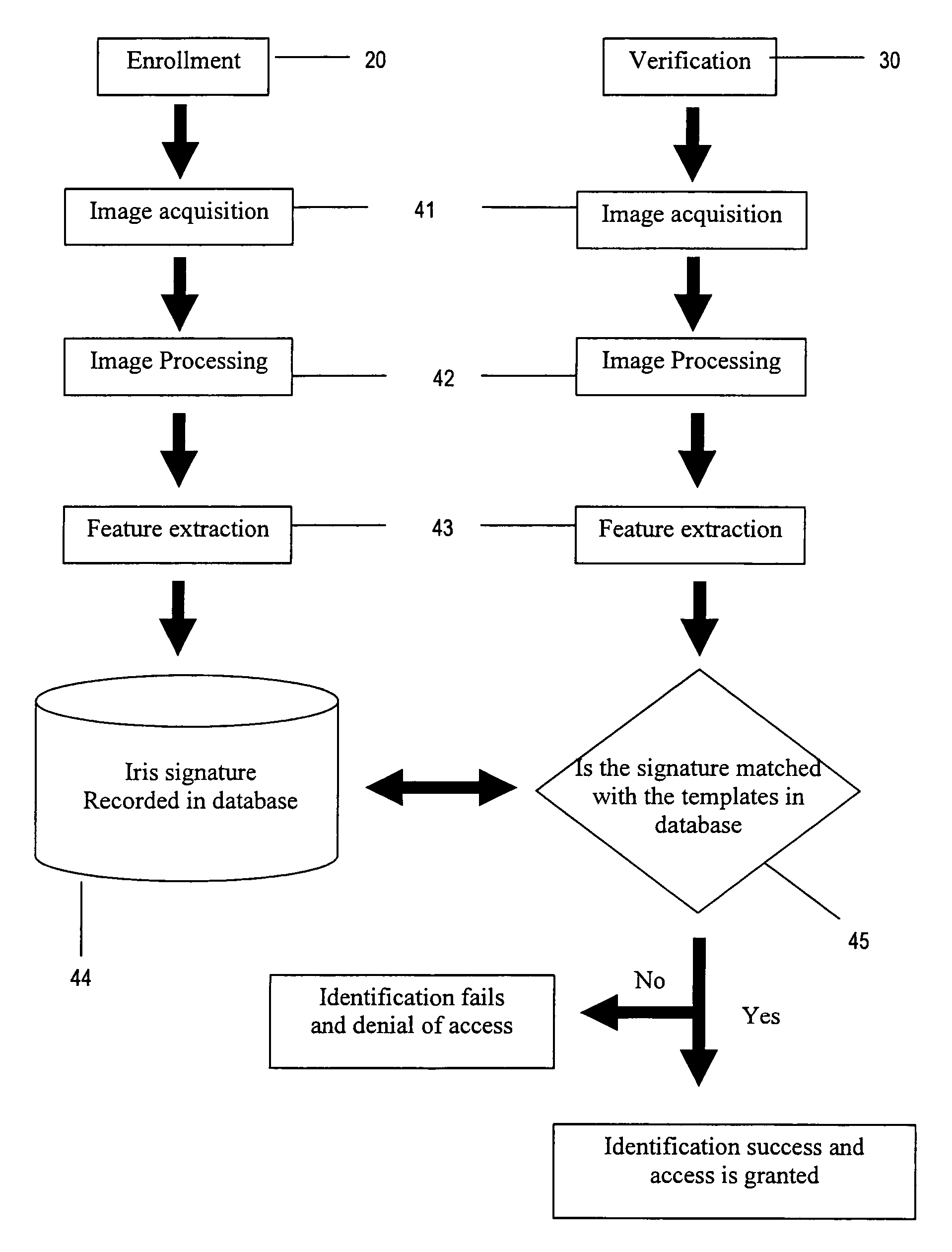Iris image-based recognition system
a recognition system and iris technology, applied in the field of human iris image-based recognition system, can solve the problems of prior-art iris recognition system and methods, unappealing physical contact required for positioning, and largely unaltered detail of iris, so as to reduce the time required for localization and achieve satisfactory matching accuracy of iris images
- Summary
- Abstract
- Description
- Claims
- Application Information
AI Technical Summary
Benefits of technology
Problems solved by technology
Method used
Image
Examples
Embodiment Construction
[0016] An embodiment of the present invention is shown in schematic form in FIG. 1 and comprises a block diagram depicting the overall architecture of an image-based human iris recognition system. The process will be discussed in overall terms, followed by a detailed analysis.
[0017] The iris of the human eye is a complex structure comprising muscle, connective tissue, blood vessels, and chromatophores. Externally it presents a visible texture with both radial and angular variation arising from contraction furrows, collagenous fibers, filaments, serpentine vasculature, rings, crypts, and freckles; taken altogether, these constitute a distinctive “fingerprint”. The magnified optical image of a human iris, thus constitutes a plausible biometric signature for establishing or confirming personal identity. Further properties of the iris that lend themselves to this purpose, and render it potentially superior to fingerprints for automatic identification systems, include the impossibility ...
PUM
 Login to View More
Login to View More Abstract
Description
Claims
Application Information
 Login to View More
Login to View More - R&D
- Intellectual Property
- Life Sciences
- Materials
- Tech Scout
- Unparalleled Data Quality
- Higher Quality Content
- 60% Fewer Hallucinations
Browse by: Latest US Patents, China's latest patents, Technical Efficacy Thesaurus, Application Domain, Technology Topic, Popular Technical Reports.
© 2025 PatSnap. All rights reserved.Legal|Privacy policy|Modern Slavery Act Transparency Statement|Sitemap|About US| Contact US: help@patsnap.com



